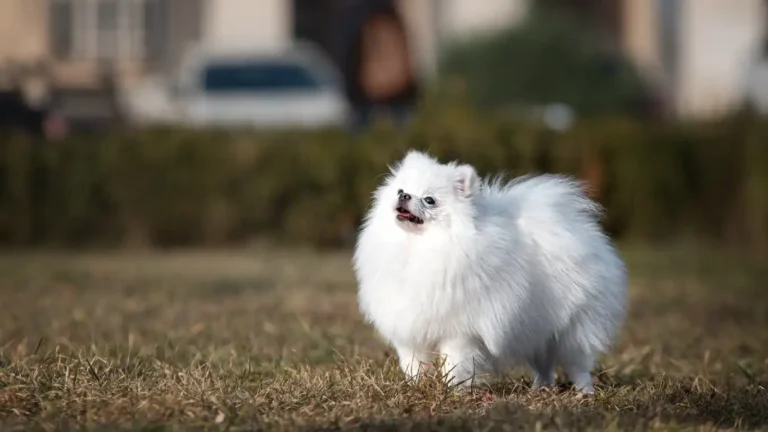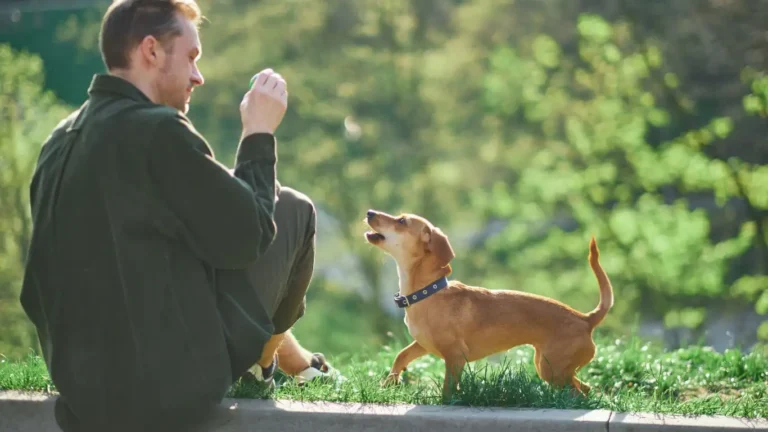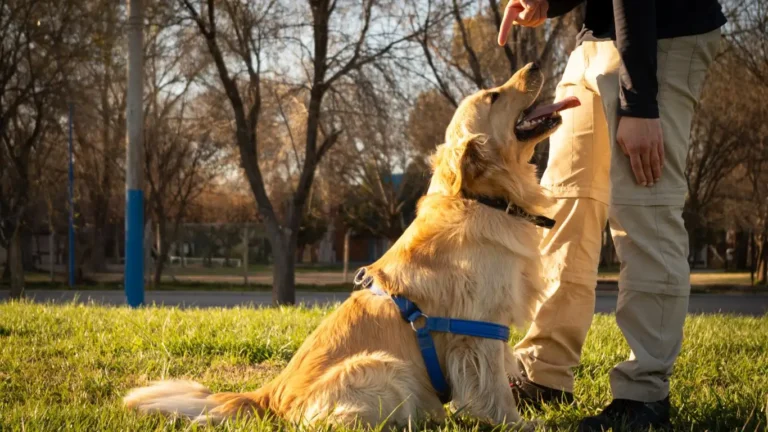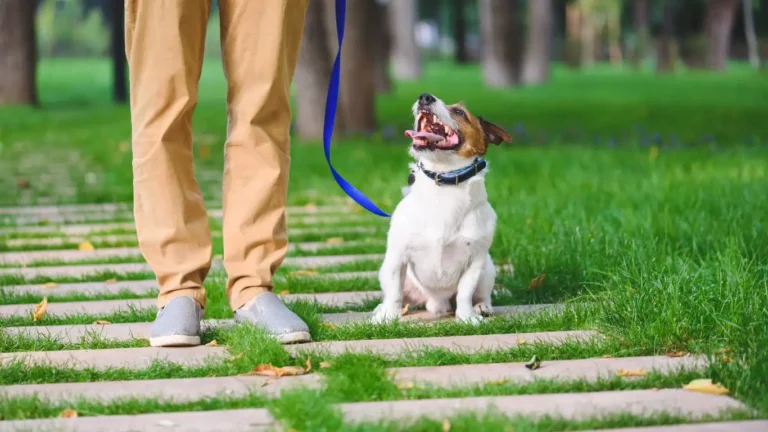Stop Your Dog Escaping the Yard: Proven Training That Works Fast
How to train a dog to stop trying to escape from the yard is one of the top questions I hear from frustrated dog parents, especially those with smart, high-energy pups. As a Canine-Assisted Therapy Trainer, I’ve seen more than my fair share of escape artist dogs—some who could probably moonlight as Houdini’s sidekick. And I get it. You turn your back for two seconds, and suddenly your furry friend is halfway down the street, tail wagging like it’s all a game. It’s not just a hassle—it can be dangerous. Let’s talk about what’s really going on and how you can work with your dog, not against them, to curb this great escape routine.
Why Dogs Try to Escape the Yard

First things first: escaping is often a symptom, not the core problem. Your dog isn’t trying to stress you out—although it can feel that way! Dogs escape for a bunch of reasons, and understanding the “why” is step one in knowing how to address it.
Boredom and Lack of Stimulation
Honestly, this is the big one. Dogs are smart—some scary smart—and if they’re left alone in the yard with nothing to do, they start improvising. I’ve trained working breeds like Border Collies and German Shepherds who practically built escape tunnels out of sheer boredom. If your dog is getting creative, chances are they’re not getting enough physical or mental stimulation.
Loneliness or Separation Anxiety
Some pups just hate being alone. I worked with a Golden Retriever named Benny who would launch himself over a 5-foot fence every time his humans left for work. After some digging (pun intended), we realized he had major separation anxiety. Once we worked on that, his urge to flee all but vanished.
Chasing Something Tempting
Dogs are driven by instinct. Squirrels, cats, the neighbor’s dog—these can all act like magnets pulling your pup over, under, or through your fence. One of my clients had a Beagle who could scale chain link like a rock climber just to greet the mail carrier!
Fear or Startle Response
Loud noises like fireworks or thunder can trigger a panic response in some dogs. Once fear kicks in, they’re not thinking straight—they’re just running. In my experience, this is especially true for rescue dogs or dogs who’ve experienced past trauma.
Setting the Foundation for a Safe, Escape-Free Yard

So how do we train a dog to stop trying to escape from the yard? Like any good training approach, it starts with setting the stage—physically and behaviorally. Here’s what I usually walk my clients through before we even start obedience training.
Assess the Yard Like a Detective
Grab a cup of coffee and walk your fence line. Look for:
- Loose boards or bent chain link
- Areas with soft soil perfect for digging
- Furniture or objects too close to the fence, which can be used as launch pads
You’d be amazed at what dogs will use to aid their jailbreaks. I once had a case where a Labrador used an upside-down kiddie pool as a ramp—ingenious and infuriating.
Upgrade Where Needed
If your dog is a climber, angled fencing can work wonders. For diggers, burying chicken wire at the base of the fence (or even better, laying it flat at ground level) deters most tunnel attempts. For jumpers, you may need to raise the height or install a secondary barrier. I’ve had success with coyote rollers for agile dogs—they can’t get a grip to hoist themselves over.
Don’t Leave Temptation Lying Around
Trash bins, compost piles, or even outdoor food bowls can lure curious noses into mischief. Keep the yard clean and boring. Yes—boring. A dog who finds the yard dull is less likely to turn it into a mission.
Building Stronger Engagement With Your Dog
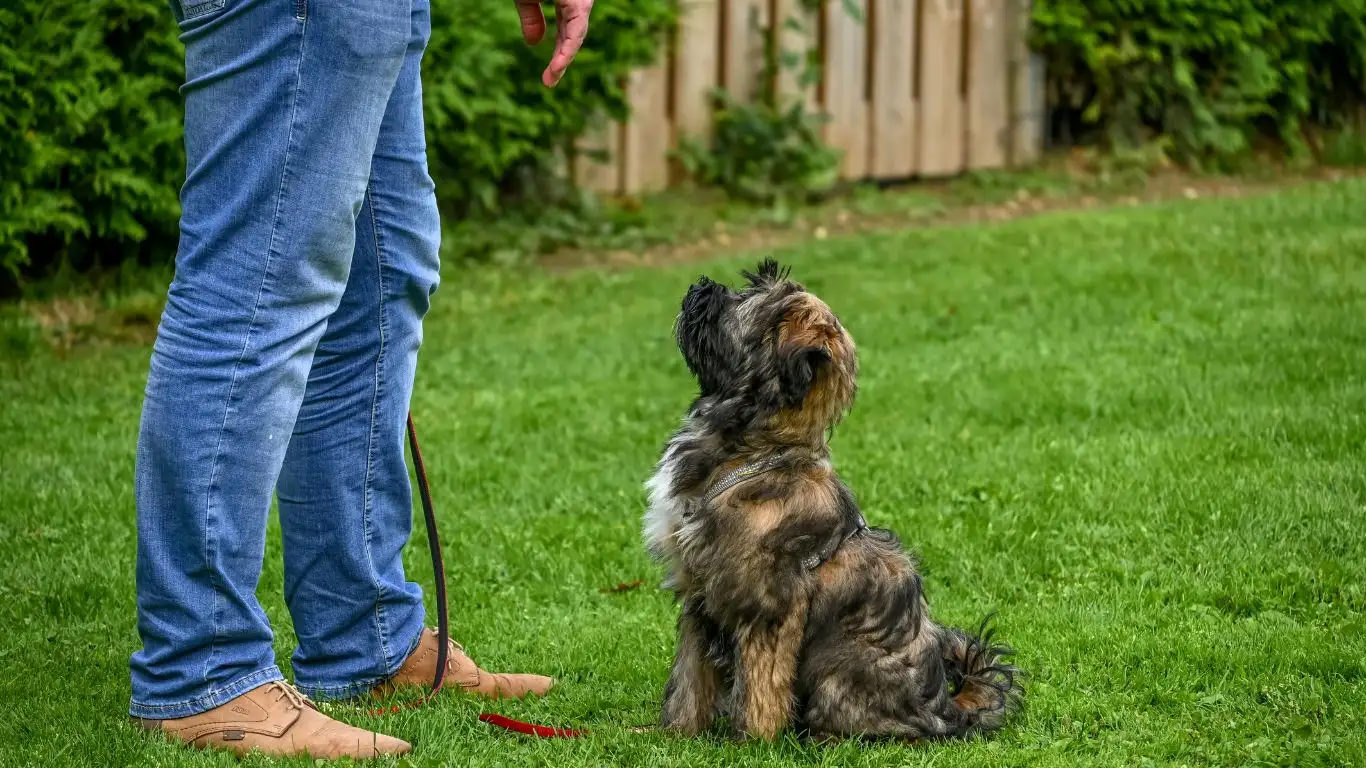
This is where the training magic happens. Before we can teach a dog not to escape, we have to give them a reason to want to stay. That comes down to connection, communication, and consistency—three things I emphasize with every client, whether we’re training therapy dogs or working on basic yard manners.
Give Them a Job
If you’ve got a working breed, chances are they’re craving purpose. Give them something to do in the yard. Puzzle toys, hide-and-seek games, or even teaching them to fetch specific items (“Find the blue ball!”) can help keep them focused and fulfilled.
Routine Enrichment Walks
A tired dog is a happy dog. If your pup is getting 30 minutes of light sniff-walking, try bumping it up to a full hour with more mental challenges like scent work or loose-leash obstacle courses. You’ll likely see their interest in the yard dwindle as their daily needs get met.
Practice “Stay” With High Rewards
I like to start “Stay” training at the gate—literally at the place where the urge to bolt kicks in. Use really good treats (we’re talking freeze-dried liver or chicken) and start reinforcing them for waiting patiently while the gate opens and closes. It’s all about building up impulse control over time.
Training Techniques That Actually Work

Alright, so now that your yard is prepped and you’re bonding more with your pup, it’s time to dive into some of the actual training techniques. This is the part where most people get a bit overwhelmed, but I promise it doesn’t have to be complicated. I’ve taught dozens of escape-prone dogs how to chill out and stay safe—and I’ve seen even the most stubborn pups come around with a little patience and consistency. Here’s how to train a dog to stop trying to escape from the yard using simple but effective methods that work in the real world.
Solidify Recall—Even When You’re Competing with Squirrels
If your dog won’t come when called, that’s priority number one. You want your voice to be more exciting than whatever’s on the other side of the fence. I teach a recall game I call “Jackpot Recall.” Start in a distraction-free area and say your dog’s name followed by “come!” in your happiest voice. When they reach you—boom!—shower them with multiple high-value treats and tons of praise. Think party-level reward. Over time, practice this in the yard, then add distractions slowly.
Use a Long-Line to Create Safe Exploration
When a dog is used to roaming or running off, going cold turkey on freedom can backfire. A long training leash (I like 20 to 30 feet) allows your pup to explore safely while you stay in control. I had a client with a super fast Aussie who loved the thrill of the chase. Using the long-line, we recreated that feeling in a safe, structured way. The dog still got the run, but within boundaries. Eventually, she stopped making a break for it at all.
“Leave It” Isn’t Just for Snacks
This underrated command is pure gold when it comes to impulse control. Teach your dog that “leave it” means to disengage and focus on you—whether that’s a chicken bone on the sidewalk or a hole under the fence. I once trained a Husky named Luna who’d laser-focus on the tiniest fence gap. Once she learned “leave it,” we could interrupt her tunnel-digging tendencies with a quick cue and redirect her to play instead.
Boundary Training: Invisible Lines That Actually Stick
This takes some time but is absolutely worth it. Walk the perimeter of your yard with your dog on a leash. Use a verbal cue like “back” or “no go” every time they approach the fence. Then gently lead them back to the safe zone and reward. Eventually, they learn that certain zones are off-limits—even without a physical barrier. I’ve seen this work wonders with visual markers like garden edging or flags too.
Managing Yard Time with Intention

One of the most overlooked pieces of the puzzle is how you use your yard. A lot of people assume their dog will “self-exercise” just by being outside, but that’s not usually the case. Dogs don’t automatically use a yard the way we’d expect. Some just lounge. Others get into trouble. And the escape-prone types? They get busy planning their next mission.
Turn the Yard Into a Playground
Try rotating toys every few days—yes, just like we do for kids. Keep things interesting with chewable puzzles, scent-based games, or even a sandpit where it’s okay to dig. One of my favorite DIYs is freezing treats inside a Kong and hiding it in different corners of the yard. Makes “home base” way more exciting.
Supervised Yard Time Builds Trust
For dogs with a strong flight drive, unsupervised yard time is often too much freedom too soon. I usually recommend that clients treat outside time more like a training session at first—structured and interactive. Set a timer for 10-15 minutes, go outside with them, and just hang out. Play, train, observe. This gives you time to notice any escape patterns and builds better communication too.
Use Routine to Reinforce Good Behavior
Dogs thrive on structure. Establishing a reliable schedule—like bathroom breaks, playtime, and feeding—can reduce the anxiety and restlessness that often lead to escape attempts. A Labrador I worked with used to bolt out of sheer unpredictability. Once we created a predictable yard routine, her need to control the chaos disappeared. She finally relaxed.
Addressing Specific Escape Styles
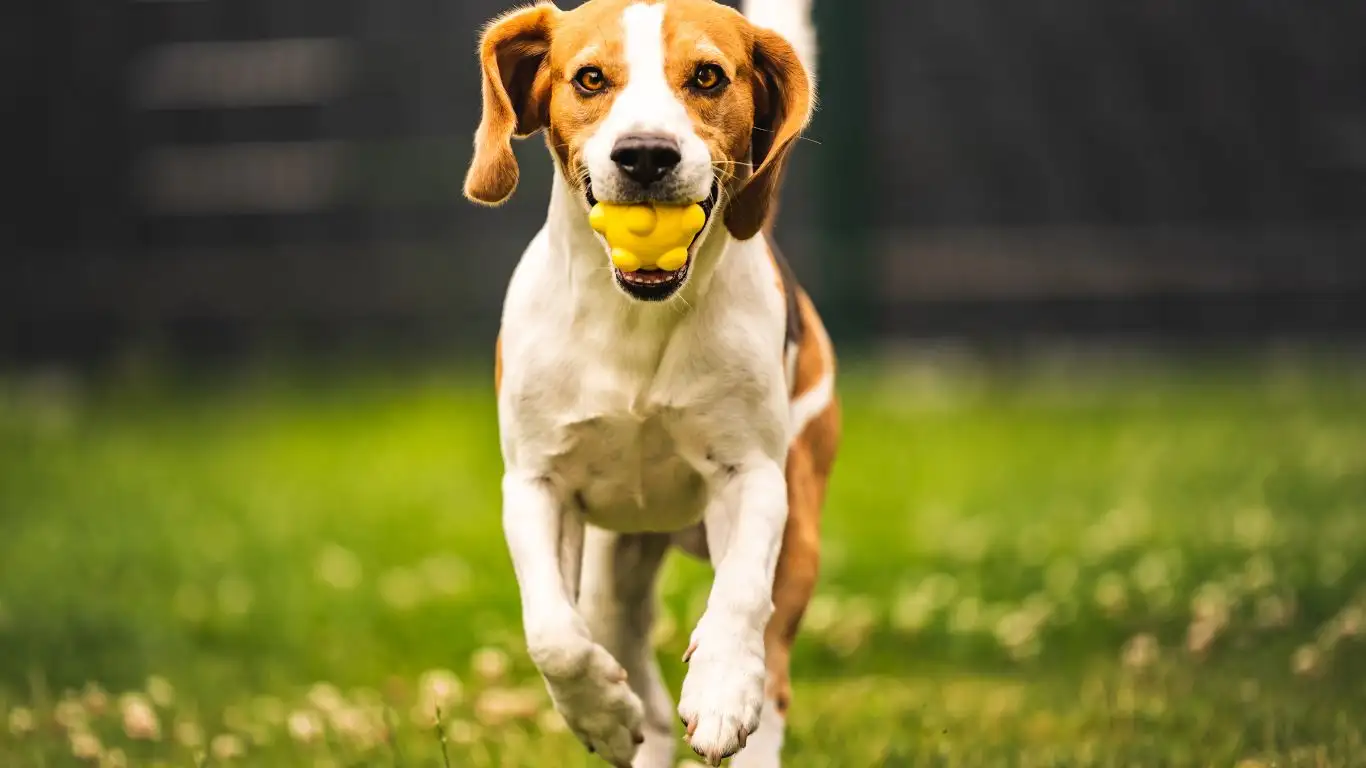
Every dog is different, and the way they escape says a lot about their mindset. Here’s how I typically categorize escape artists—and how to tweak your approach accordingly:
The Jumper
- Add height to your fence or use angled extensions (like inward-facing L-brackets).
- Block visual triggers—opaque barriers can make the outside world less tempting.
- Train “off” as a default response to approaching the fence line.
The Digger
- Install buried chicken wire or landscape edging beneath the fence.
- Provide a “legal” digging zone—fill a sandbox with toys or treats.
- Redirect digging behavior with intense sniff-based games or treat hunts.
The Climber
- Remove footholds like planters or nearby furniture.
- Use slippery materials like PVC or coyote rollers on top rails.
- Increase physical and mental enrichment to reduce the drive to escape.
The Bolt-When-I-See-It Type
- Strengthen recall and stay commands with high-reward training.
- Use a leash or long-line during high-distraction moments.
- Practice emergency recall games regularly.
Whatever type your dog is, there’s always a strategy that works—promise. It might take some experimenting and plenty of consistency, but that “ah-ha” moment when your dog stops pacing the fence line or waiting by the gate like a tiny furry convict? So worth it.
Advanced Behavior Strategies for Persistent Escape Artists
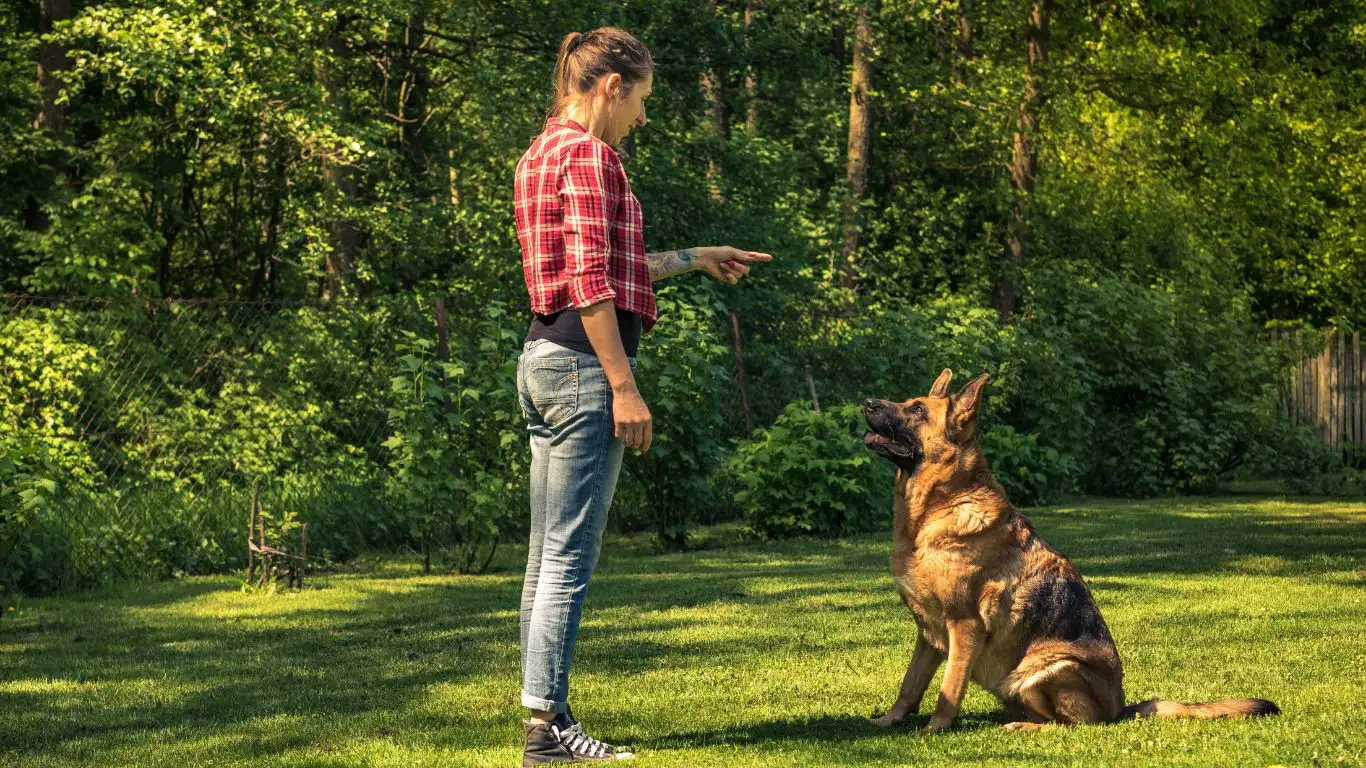
If you’ve made it this far, chances are your dog isn’t just a casual fence-hopper—they’re a full-blown escape enthusiast. That’s okay. I’ve worked with dozens of dogs like this—clever pups who treat escaping like a hobby. These dogs often need more than basic training. That’s where behavior modification really comes into play. If you’re still wondering how to train a dog to stop trying to escape from the yard after trying everything in the first two parts of this guide, this next phase might be the game-changer.
Identify and Reduce Triggers
This is where observation pays off. When does your dog usually try to escape? Is it after the neighbor’s dog barks? When a delivery truck pulls up? Does it always happen at the same time of day? These aren’t random. They’re cues your dog is responding to. Once you spot the patterns, you can preemptively engage your dog during those high-risk windows—think structured play, a leash walk, or indoor mental games.
For example, I once worked with a young Catahoula named Finn who always tried to jump the fence right around the mail carrier’s route. The solution wasn’t just physical—it was behavioral. We practiced redirection games 10 minutes before that daily trigger, and within two weeks, he stopped fixating on the mail truck altogether.
Build More Autonomy—But Safely
Dogs that obsess over getting out often lack a sense of control over their environment. Ironically, giving them safe opportunities to make choices can reduce the urge to rebel. Here’s how:
- Offer your dog a few choices during training (which toy to fetch, which hand has the treat).
- Use a dog-safe playpen or x-pen outside where they can roam a larger area without risk.
- Try a supervised “free play” session in a fully enclosed area like a tennis court or dog park—just to let them burn off steam in a novel space.
Real Stories, Real Solutions
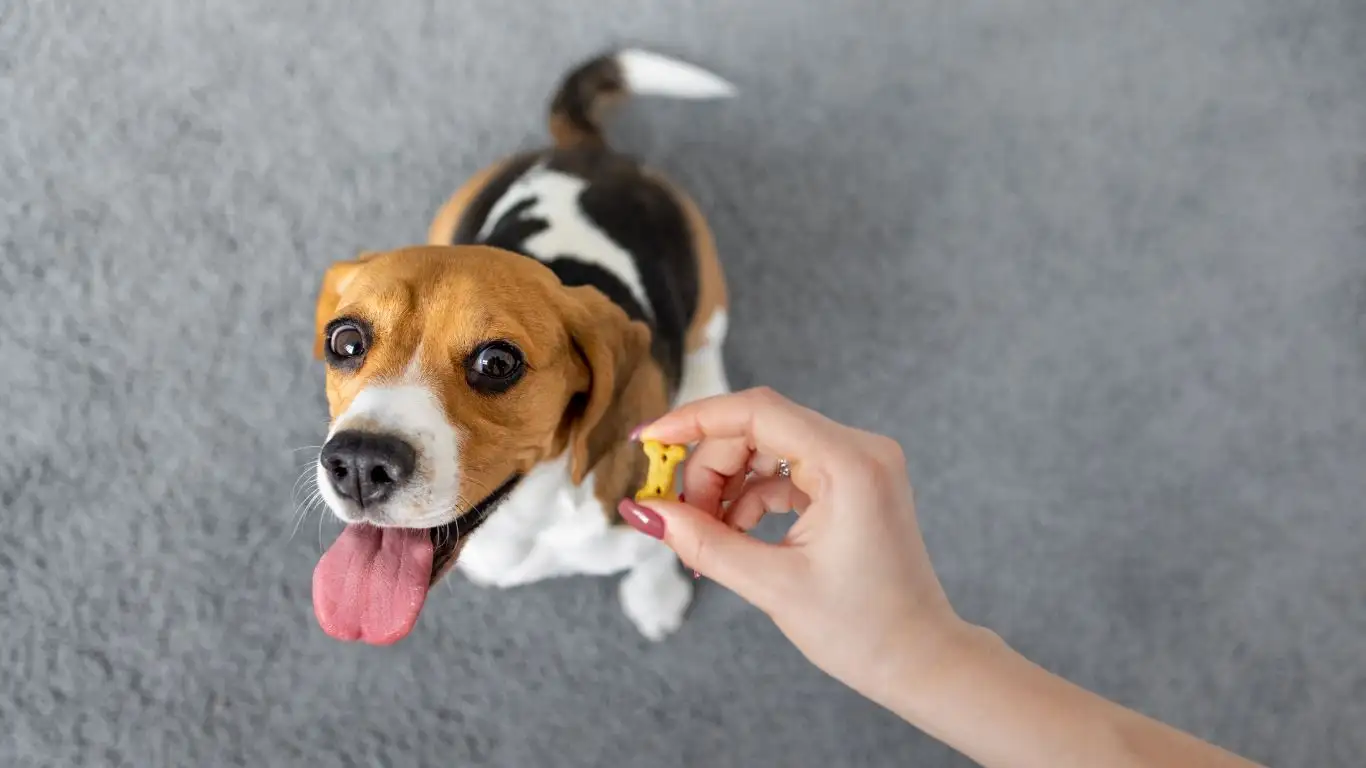
I want to share a couple of quick stories from the field, because sometimes it’s hearing how someone else got through it that gives us that little push of hope.
The Great Pyrenees Who Couldn’t Be Contained
Milo was 120 pounds of fluff and stubborn willpower. He was scaling 6-foot fences like a gymnast. His family was at their wits’ end. We didn’t just raise the fence—we reinvented Milo’s entire routine. We added enrichment, gave him a job (he became the “yard supervisor” with boundary walks), and reinforced calm behaviors. Within a month, he was more relaxed. Within three, he hadn’t tried to escape once. His family called it a “complete personality shift.”
The Tiny Terrier with a Tunnel Vision
Pepper, a Jack Russell, could dig like a badger. She had escape holes so well-hidden even I missed them at first. What worked for her? Chicken wire + redirection games + a digging box filled with hidden treats. Once she realized there was a “legal” digging zone that got her rewarded, she abandoned the escape tunnels altogether. Smart pup, just needed the right outlet.
Tools That Support Your Training
Let me be clear—no tool replaces training, but some of them can absolutely help along the way, especially during the more difficult phases of teaching your dog to stay safely in the yard.
GPS Collars & Smart Tags
If you’re dealing with a repeat offender, a GPS collar might bring some peace of mind. While we never want to rely on it forever, it’s a great safety net during training. Some options even let you set virtual “safe zones” and alert you if your pup breaches them.
Motion-Activated Deterrents
These can include harmless options like ultrasonic bark deterrents or scent-based repellents placed near fence weak points. They’re best used in tandem with behavioral training, not in place of it.
Interactive Cameras & Audio Devices
If you’re away often, a pet cam that lets you talk to your dog can ease separation anxiety. I’ve had clients record their voice and play it back on a timed schedule—surprisingly effective for pups with mild anxiety issues.
What Not to Do: Avoid These Common Mistakes
In my experience, even the most well-meaning dog parents can fall into traps that actually make the behavior worse. So let’s steer clear of these:
- Don’t punish escape attempts—it creates fear, not trust.
- Don’t rely solely on shock collars—these can increase anxiety and aggression over time. Positive training is way more sustainable.
- Don’t give up too soon—change takes time. If you’ve been consistent for 3-4 weeks and still no improvement, it may be time to consult a certified behaviorist.
Helpful Resources & Continued Learning
If you’re ready to dive deeper into dog behavior, or just need a little backup, here are some great resources I often recommend to clients:
- American Kennel Club (AKC) – for breed-specific behavior insights
- PetMD – health, behavior, and wellness info all in one place
- National Institutes of Health (NIH) – solid research if you love digging into science-backed data
Remember, you’re not alone in this. Whether your dog is leaping fences or pulling a disappearing act, there’s a way through it. I’ve seen even the wildest escape artists settle into calm, confident yard dwellers with the right approach. The goal isn’t just keeping them in—it’s helping them want to stay.
Disclaimer
This article is based on my professional experience as a Canine-Assisted Therapy Trainer and is intended for informational purposes only. Every dog is unique, and what works for one may not work for another. If your dog exhibits persistent or dangerous escape behaviors, consult a certified dog behaviorist or your veterinarian. Always prioritize your dog’s physical and emotional well-being when making training or containment decisions.



